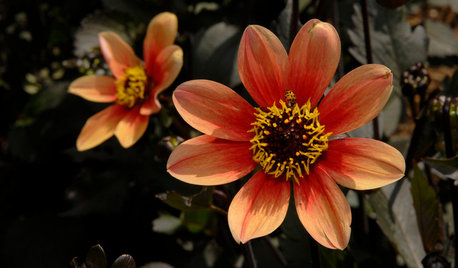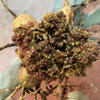earwigs eating the whole plant
seventowers
18 years ago
Related Stories

EVENTSEnjoy Plantings, Eat Bugs and Learn at the Australian Garden Show
Indulge your senses at this four-day celebration of gardening, food and more in Sydney — and don't forget to try the crickets
Full Story
HOLIDAYSA Thanksgiving Tradition to Last the Whole Year
Looking for a thoughtful yet simple way to capture your family's gratitude? Grab a jar and paper
Full Story
FLOWERSGreat Design Plant: Dahlias
Pick this flamboyant stunner for its amazing array of colors and faces, fast growth and sizes that can fill a pot or a whole garden
Full Story
GARDENING GUIDESGreat Design Plant: Cephalanthus Occidentalis
Buttonbush is an adaptable woody shrub with delightful pincushion flowers
Full Story
GARDENING GUIDESGreat Design Plant: Wild Lupine Dresses Up Rocky Gardens
Spiky blue flowers and a high tolerance for poor soil make this plant ideal for tough sites
Full Story
GARDENING GUIDESGreat Design Plant: Sambucus Nigra
Common elderberry is a highly adaptable shrub from the eastern U.S., with berries galore for wildlife and humans alike
Full Story
PRODUCT PICKSGuest Picks: Catch Spring Fever in the Kitchen and on the Table
Let zingy colors, budding plants and more freshen your cooking and eating spaces to match the new season
Full Story
GARDENING GUIDESGreat Garden Combo: 3 Wonderful Plants for a Deer-Resistant Screen
Protect your privacy and keep deer at bay with a planting trio that turns a problem garden area into a highlight
Full Story
GARDENING GUIDESDo You Have This Invasive Plant in Your Yard?
Garlic mustard is spreading across the U.S. Here’s how to spot it and what to do
Full Story
EDIBLE GARDENSGarden BFFs? Why Your Vegetables Are Begging for Companion Plants
Foster friendships among plants for protection from pests, pollination support and color camaraderie
Full StorySponsored
Franklin County's Preferred Architectural Firm | Best of Houzz Winner







DapperDahlia
tcgreene7
Related Professionals
Pottstown Landscape Contractors · Barrington Landscape Contractors · Fishers Landscape Contractors · Lake Saint Louis Landscape Contractors · North Highlands Landscape Contractors · Quincy Landscape Contractors · Wallingford Landscape Contractors · Wickliffe Landscape Contractors · Chicago Fence Contractors · Minneapolis Fence Contractors · Newark Fence Contractors · Queen Creek Fence Contractors · Richmond Fence Contractors · Freeport Solar Energy Systems · Wildomar Solar Energy SystemsseventowersOriginal Author
JeanetteMN
seventowersOriginal Author
Poochella
seventowersOriginal Author
mitanoff
Poochella
tracey_nj6
misslucinda
covella
misslucinda
spock
covella
akoshaug
triple_b
cocker_mommy
Poochella
uroboros5
cotodahliagirl
jstrong1979_yahoo_com
kathille3